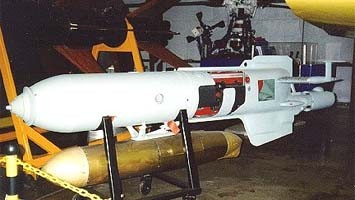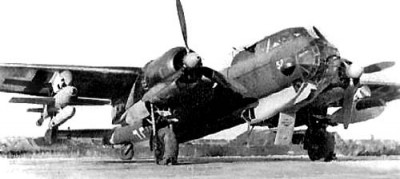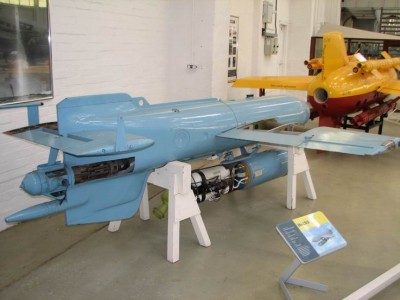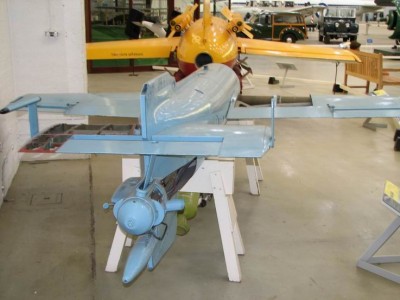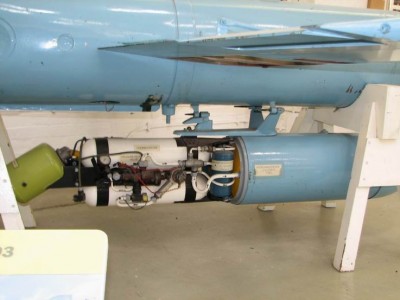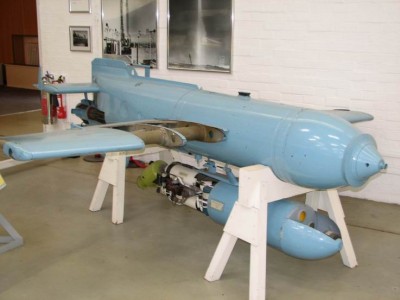Already in 1940 the Henschel company was developing the Hs 293 aerial bomb with a liquid-fuel rocket engine Walther HWK 109-507 according to the design of Prof.Dr.H.Wagner.At the end of 1940 the first prototypes were ready for testing.The first test of 16.12.The second attempt on 18.12.1940 was successful.However, the development was prolonged until 1943,when the Hs 293 bomb was introduced into the arsenal.
The bomb was controlled from the deck of the bomber by the Kehl-Strassburg system using radio command control according to optical tracking of the flight path(5 tracers burning for 110 seconds were used for better observation).The rocket motor working at the beginning of its bomb trajectory,accelerated it to 230-250 m/s.Because radio control was easily jammed,wire control was being prepared.
The bomb was to form the armament of the unrealized Heinkel He-177,eventually the Dornier Do-217 and Focke-Wulf FW 200 types were used.
Multiple versions of the Hs 293 gliding missile bomb were produced.
Hs 293 A
The only combat-used version.
Due to the recurrent freezing of the pressurized fuel supply air valves(the units had their magazines filled with moistened air), the HWK 109-507(HWK 109-507B) type was to be replaced by the BMW 109-511(5.9kN for 12s).However, early on in series production it was decided to use a powder rocket engine WASAG 109-512(66kg dg of powder gave a thrust of 12kN for 11s).The drop was from an altitude of around 6,000m and the range was 12-16km.
Other control systems were also tested(Greifswald-Kolberg,Marburg,Kogge-Brigg,Kran-Brigg).
About 1900 pieces were produced in total.Probability of hits was around 45-50%.
Hs 293 B
Identical to Hs 293 A,the control system was changed(Dortmund-Duisburg).
About 200 units were produced and used for military trials,they were not used in combat.
Hs 293 C
Last part of the runway was under water.
total weight 900-1094kg
length 3.84-4.70m
span 3.1m
engine HWK 109-507B
control systems of various kinds
60 units produced
Hs 293 D
Propulsion the same as in Hs 293A.Tonne 4a-Seedorf 3 TV guidance system.225 units produced,of which 80 were used in trials in 1943-44.Not used combat.
total weight 1985kg
length 5.06m
span 3.1m
Hs 293 E
Version for trials of new guidance systems.18 units were produced,the project was cancelled and no trials took place.
Length 3.82m
Hs 293 F
The bomb was to be powered by two TPH Schmidding SG33 rocket engines.The wings were delta shaped.The project was cancelled in late 1943.
span 1.60-2.74m
length 3.20-3.625m
Hs 293 G
Version for trials of a new method of guidance.After 10 trial examples were made, the project was cancelled.
Hs 293 I(J)
Bigger fight.increased explosive load(585kg of explosive).A few sample pieces were made,tests probably did not take place.
span 3.10m
length 3.82m
weight of warhead 1260kg(585kg of explosive)
*source : Kroulík/Růžička - Vojenské rakety,Naše vojsko
